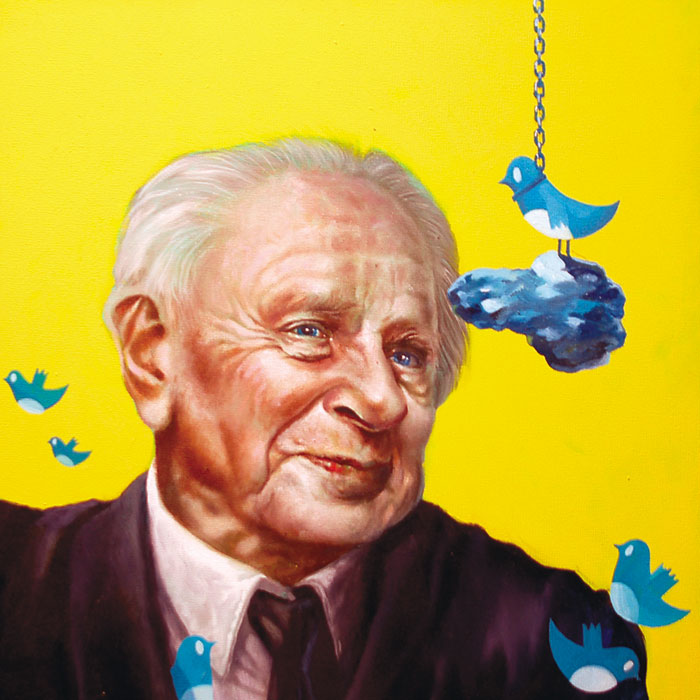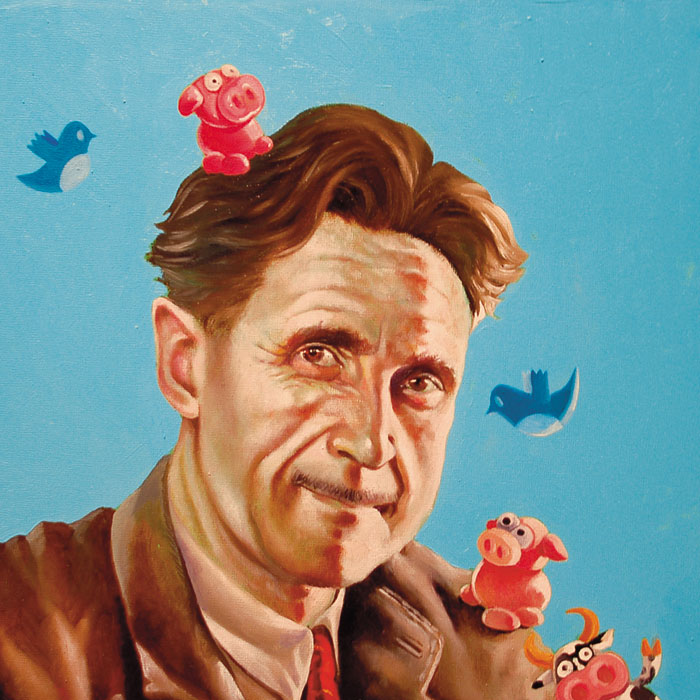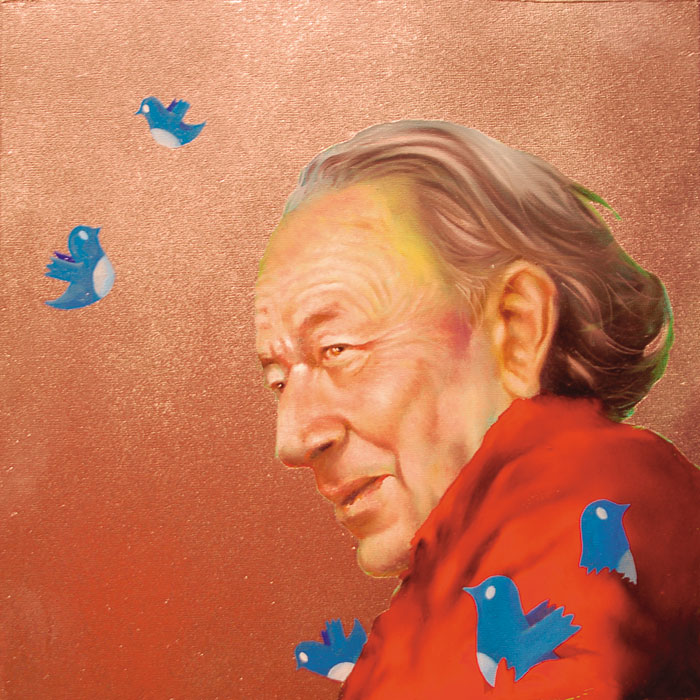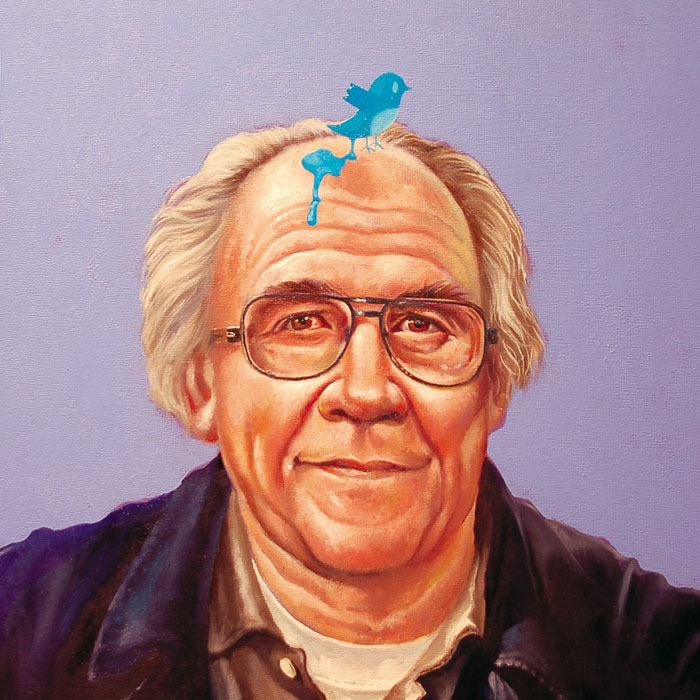The Twitter Issue
Twitter's not just the next step in online communication or social networking, according to Francesco Masci—it's the next step in civilization.

Interview by Nicole Pasulka
Why have you embellished portraits of theorists and philosophers like Jean Baudrillard and Karl Popper with the Twitter icon?
This series started as a single piece one night while I subscribed to Twitter. As usual, I did not step away from the computer, so I got sucked into the internet and started jumping and brainstorming from one thing to the other—and it was great. I automatically connected readings relating to evolution, biologist Gregory Bateson, anthropological subjects, and cybernetics with other things I was reading on the web, blogs, and tweets. People and thinkers that I was reading, who are trying to understand how human beings work and make hypotheses about the future, fit perfectly into this mashup. I ended up painting an image I found on Google of Charles Darwin. Blue birds invaded the image. The moment that you make a piece of art, maybe you don’t really think. My brain was loaded up with images, and these particular ones came to me automatically. Continue reading ↓
All images © Francesco Masci, courtesy the artist, all rights reserved.





Interview continued
Are you looking for guidance and insight into new social and cultural phenomenon?
Just like the writers and thinkers I depict, I have my own hypotheses and ideas. I’ve absorbed their ideas in philosophies and have created personal atmospheres around them.
Do you wonder what they’d say about our world today, or are you just having fun with social media?
Certainly, I would be very curious to hear what these people would have to say about the state of what’s happening in our information-drenched society, but it seems absurd almost to imagine them frozen in time somehow and transported to “now.” I am actually more attracted to the opinions of my contemporaries who are looking at the phenomenon today.
As for fun? Yes. I’m having total fun, combining human facial expressions and elements of cartoons. In painting, I can recreate the atmosphere that I imagine there would be if the scene was happening for real. It does happen when I paint it. The way we all live in an open tribe of the web, so to speak, has inspired my painting space.
A lot of your work seems to juxtapose the “high” cultural with the mainstream or commercial or consumer objects. Why are you drawn to painting these contrasts—if they are in fact contrasting?
I am fascinated by a process I observe most every day, one which I like to call “crystallization”—things start from one place and spread so fast (real-time) in our culture; soon after, they solidify in our mind. Combining times, elements, styles, and concepts is not a contrast for me. This is normal and it happens every day. And normalcy can be stranger than fantasy.
Do you tweet? How do you feel about Twitter?
I don’t, but I feel terribly good about Twitter.
The men you’ve painted have each authored a concept, philosophy, or idea that’s become relatively mainstream, or at least widely recognized and influential—simulacra, natural selection, the double bind, etc. Are you interested in the dissemination or popularization of philosophy and theory?
Now I paint “The Twitter Issue,” tomorrow may be I’ll work on a totally different matter, driven by whatever connection. I am interested in everything. Dissemination presupposes a subject—scary! I think the ecosystem will do the job itself. Maybe the blue bird will be influential?
